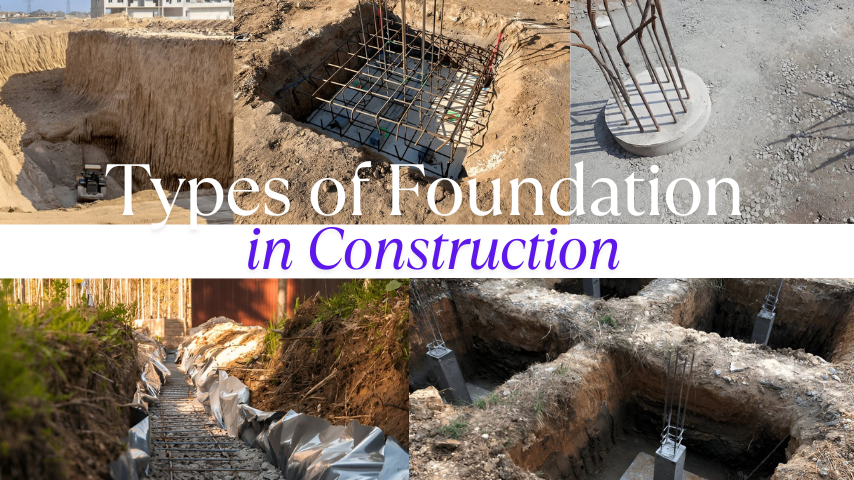Types of Foundations in Construction
A building’s foundation is the backbone of its structural integrity, ensuring stability, safety, and longevity. It serves as the critical link between the structure and the ground, effectively distributing loads to prevent settlement, cracks, or failure over time. The types of foundations in construction: the choice of foundation depends on several factors, including soil composition, environmental conditions, and the building’s load-bearing requirements.
At Noah Infrastructures, we specialize in designing and constructing robust foundations tailored to the unique demands of each project. In this blog, we explore different types of foundations in construction, their applications, common challenges, and solutions to ensure a solid base for every construction endeavor.
Different Types of Foundations in Construction
The foundation of a building transfers the load of the structure to the ground, preventing settlement and structural failure. Types of foundations in construction are broadly categorized into shallow foundations and deep foundations based on the depth of placement and soil conditions.
1. Shallow Foundations
Shallow foundations are one among the various types of foundations in construction. They are typically used when strong soil layers exist close to the surface. They are cost-effective and suitable for low-rise to mid-rise buildings with moderate loads.
a) Spread or Isolated Footing
Isolated footings, also called pad footings, are commonly used for individual columns. These footings distribute the load over a specified area to prevent excessive settlement. They are typically square, rectangular, or circular and are best suited for firm soil conditions.
Applications:
-
Residential and small commercial buildings
-
Industrial structures with evenly spaced columns
-
Areas with good soil-bearing capacity
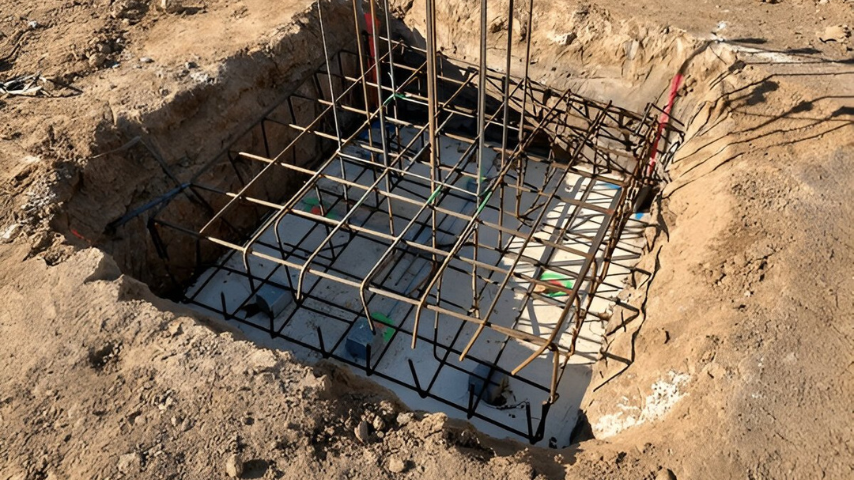
b) Strip or Continuous Footing
Strip footings extend along the length of a load-bearing wall and distribute the weight evenly. These foundations are common in masonry structures and help support walls, reducing pressure on the soil.
Applications:
-
Low-rise residential buildings
-
Buildings with brick or stone masonry walls
-
Areas where soil conditions are moderately strong
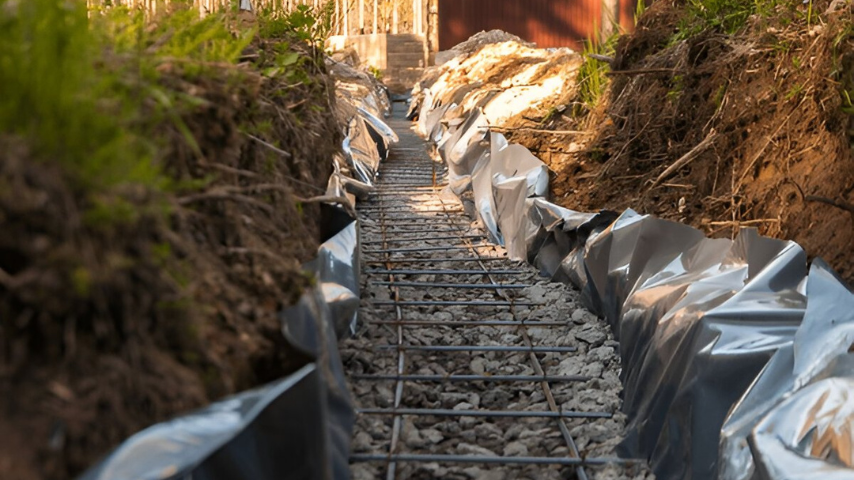
c) Raft or Mat Foundation
A raft foundation spreads the load over a large area, covering the entire footprint of the building. This type is used when the soil has a low bearing capacity and differential settlement needs to be minimized.
Applications:
-
High-rise buildings and skyscrapers
-
Industrial structures with heavy loads
-
Poor soil conditions requiring enhanced load distribution
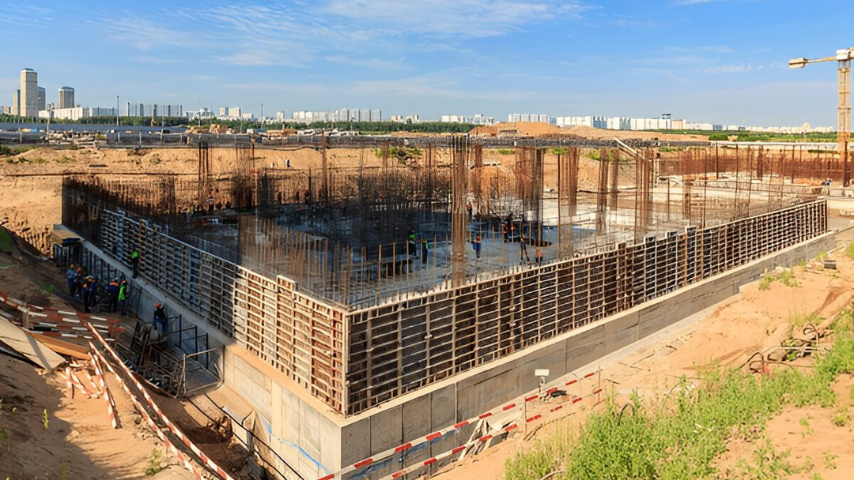
d) Combined Footing
When two or more columns are close together and their footings overlap, a combined footing is used to distribute the load effectively. These footings can be rectangular or trapezoidal, depending on the column arrangement.
Applications:
-
Buildings with limited space for individual footings
-
Structures with uneven column spacing
-
Cases where soil-bearing capacity varies across the site
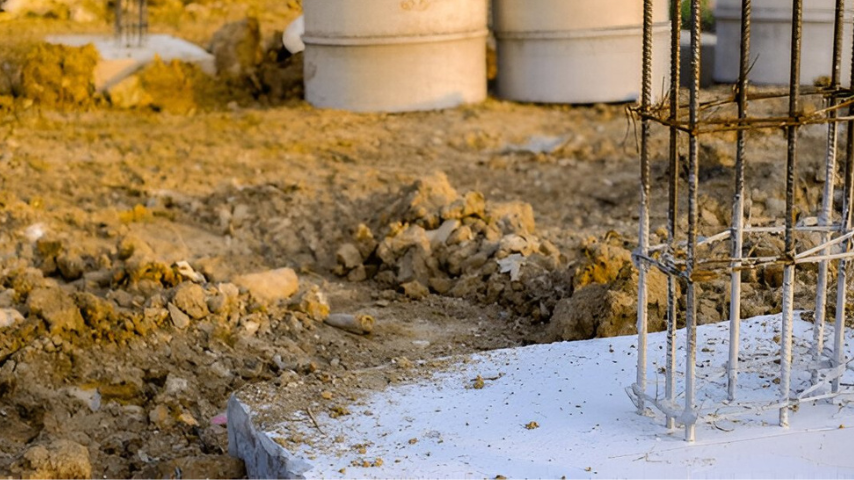
2. Deep Foundations
Deep foundations are used when the surface soil is weak, requiring the structure’s load to be transferred to deeper, stronger soil layers or rock formations. These foundations provide stability and are essential for large-scale projects.
a) Pile Foundation
Pile foundations consist of long, slender columns made of concrete, steel, or wood that are driven deep into the ground. They provide support in areas where surface soil is weak, unstable, or prone to excessive settlement.
Types of Piles:
End-bearing piles: Transfer loads to a hard stratum deep below.
Friction piles: Rely on skin friction along the pile’s length to transfer loads.
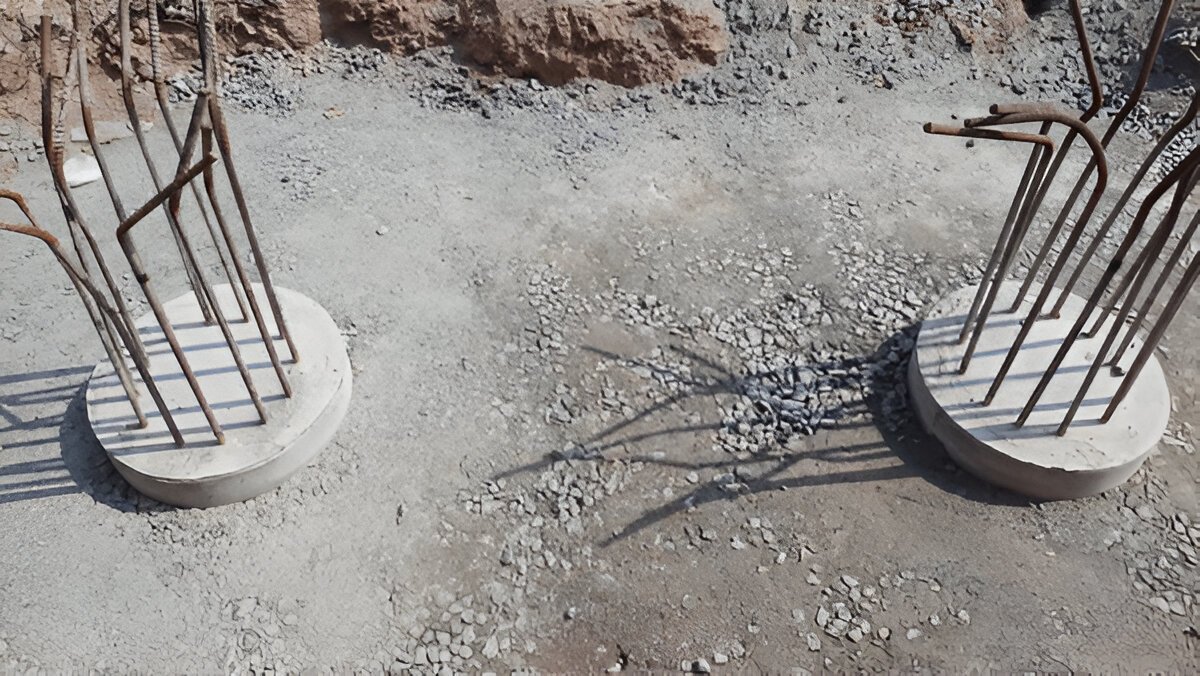
Applications:
-
High-rise buildings
-
Bridges, piers, and offshore structures
-
Areas with loose, waterlogged, or expansive soils
c) Caisson Foundation
A caisson foundation is a watertight structure used for underwater construction. These foundations are built using prefabricated components that are lowered into place and filled with concrete.
Applications:
-
Bridge piers and dock constructions
-
Offshore oil rigs
-
Marine and coastal structures
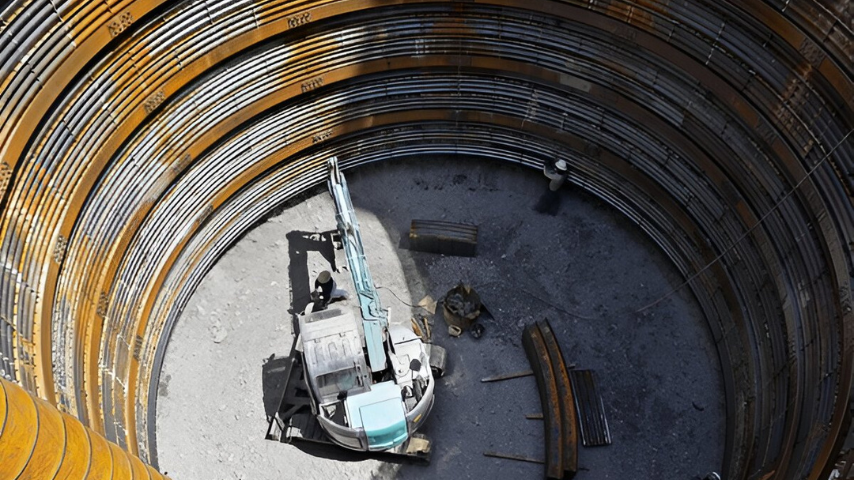
Common Foundation Problems and Solutions
Even the most well-designed foundations can encounter issues due to soil conditions, environmental factors, or improper construction. Here are some common foundation problems and how they can be addressed:
Settlement and Uneven Foundation
Problem: Over time, soil compression or inadequate compaction can cause parts of the foundation to sink, leading to cracks in walls and floors.
Solution: Underpinning methods such as helical or resistance piers can help stabilize and lift the foundation. Soil stabilization techniques can also be used to prevent further settlement.
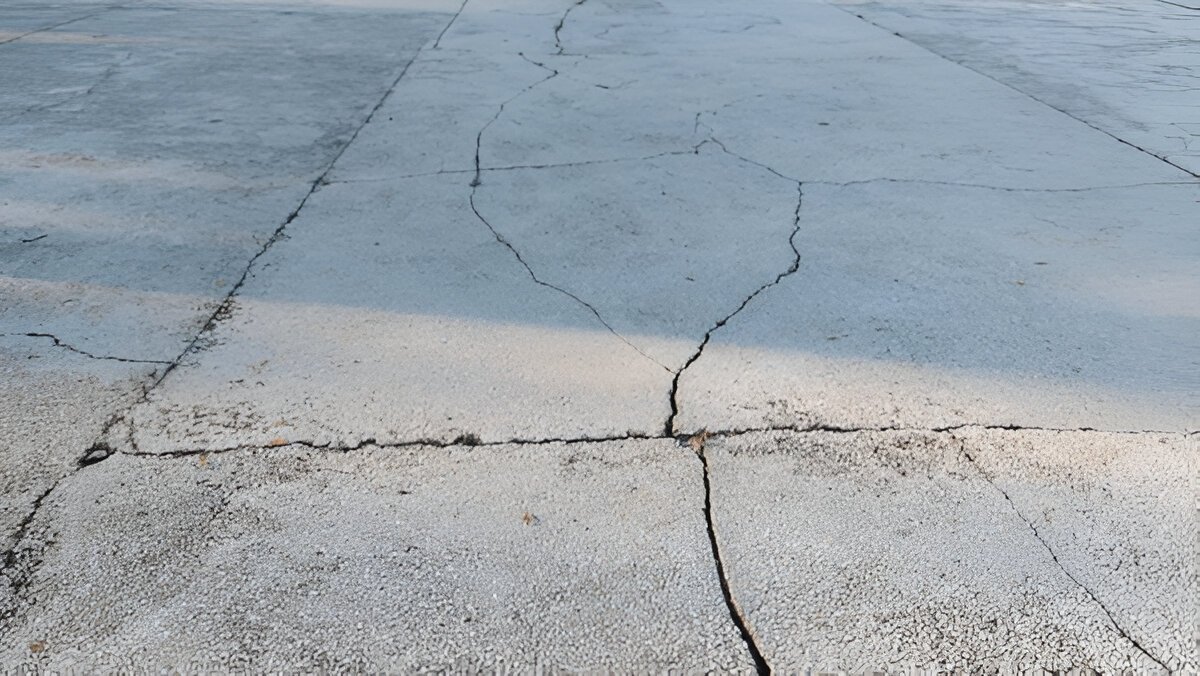
Foundation Cracks
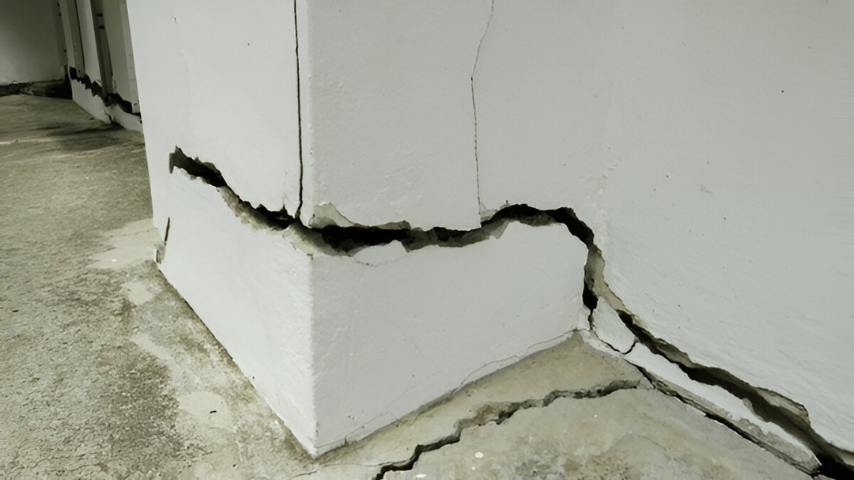
Problem: Small hairline cracks are normal, but large or widening cracks may indicate structural problems caused by soil movement or excessive load.
Solution: Minor cracks can be sealed with epoxy injections, while major cracks may require structural reinforcement using carbon fiber strips or additional concrete supports.
Water Damage and Drainage Issues
Problem: Poor drainage can lead to water pooling around the foundation, causing soil erosion, hydrostatic pressure, and leaks in the basement or crawl space.
Solution: Proper site grading, installation of French drains, and waterproof coatings can help divert water away from the foundation and prevent damage.
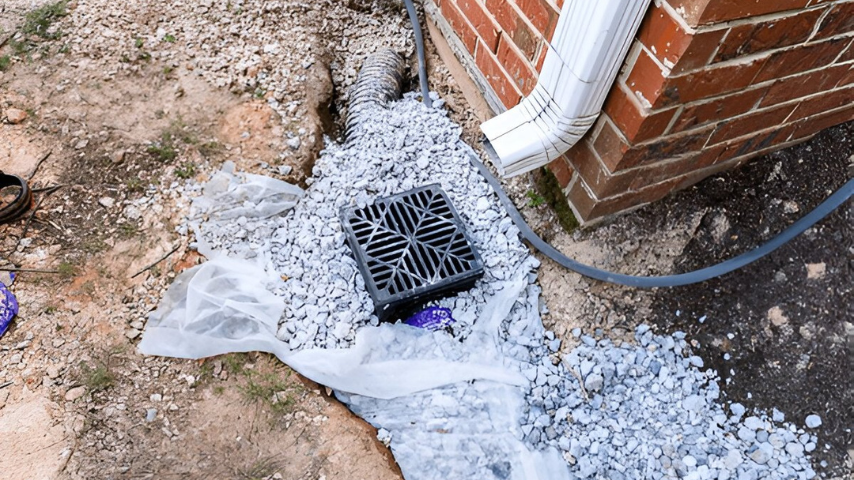
Expansive Soil Movement

Problem: Clay-rich soils expand when wet and shrink when dry, creating constant movement that can stress the foundation.
Solution: Moisture control measures such as root barriers, moisture barriers, and soil treatment techniques can help reduce movement. Deep foundations like piles may also be necessary for such soil types.
Poor Construction Practices
Problem: Using substandard materials, improper reinforcement placement, or inadequate soil testing can lead to foundation instability.
Solution: Adhering to engineering best practices, conducting thorough soil analysis, and using high-quality materials ensure long-lasting foundation integrity.
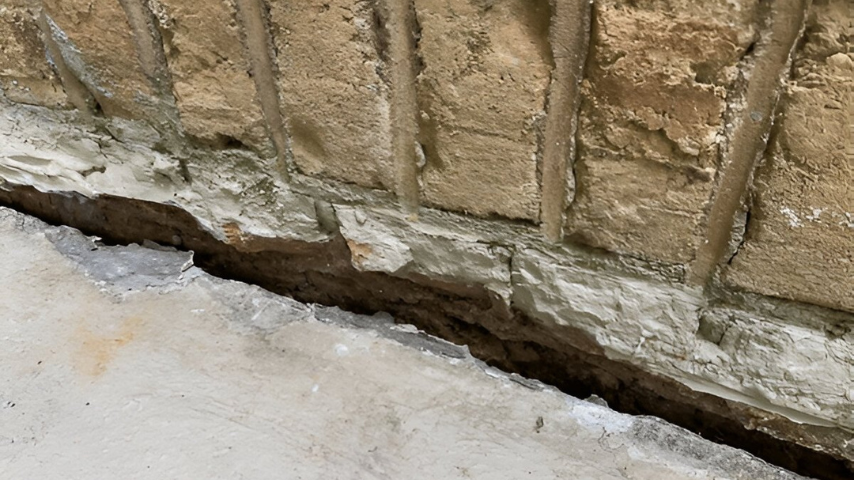
By addressing these potential foundation issues early, Noah Infrastructures ensures that every project remains structurally sound for years to come.
Key Factors in Selecting the different types of Foundations in Construction
Choosing the appropriate foundation among the different types of foundations in construction requires careful analysis of various factors:

At Noah Infrastructures, we utilize advanced engineering techniques to analyze these factors and provide the most suitable foundation solutions for every project.
Conclusion
A well-designed foundation is crucial for the safety and durability of any structure. Whether it’s a small residential home or a large commercial complex, selecting the right foundation ensures stability and prevents long-term structural issues. At Noah Infrastructures – The best building contractors in Chennai, we specialize in delivering high-quality, reliable foundation solutions tailored to diverse construction needs.
If you need expert guidance on choosing the best foundation for your project, contact Noah Infrastructures today for professional consultation and engineering support.
FAQs about Types of Foundations in Construction
1. Why is foundation selection important in construction?
-
Foundation selection is crucial because it ensures structural stability, prevents settlement issues, and supports the load of the building. The right foundation among the different types of foundation in construction not only helps in managing environmental factors like soil movement but also helps in water drainage.
2. What factors influence the choice of foundation for a building?
Several factors affect types of foundations in construction selection, including:
-
Soil type and bearing capacity
-
Load of the structure
-
Water table level
-
Environmental conditions like seismic activity and flooding
-
Budget and construction feasibility
3. What is the difference between shallow and deep foundations?
-
Shallow foundations are used when strong soil is available near the surface, while deep foundations transfer the load to deeper, more stable soil layers. Shallow foundations are more cost-effective, whereas deep foundations are necessary for high-rise buildings, bridges, and structures on weak soils.
4. How can I identify foundation problems in my building?
Signs of foundation issues include:
-
Cracks in walls, floors, or ceilings
-
Uneven or sloping floors
-
Doors and windows sticking or not closing properly
-
Water pooling around the foundation
-
Visible gaps between the foundation and the structure
5. How can foundation problems be fixed?
Solutions depend on the issue that happened in the type of foundations in construction but may include:
-
Underpinning techniques to strengthen weak foundations
-
Installing drainage systems to prevent water damage
-
Using expansion joints or reinforcement for crack repair
-
Soil stabilization methods to prevent shifting
6. How long does a foundation last?
-
A well-constructed foundation can last for several decades or even centuries if properly maintained. Factors like soil conditions, construction quality, and environmental exposure affect its lifespan.
7. Does Noah Infrastructures provide customized foundation solutions?
-
Yes, Noah Infrastructures specializes in all types of foundations in construction providing customized foundation solutions based on thorough soil analysis, structural requirements, and environmental factors to ensure long-term durability and stability.

